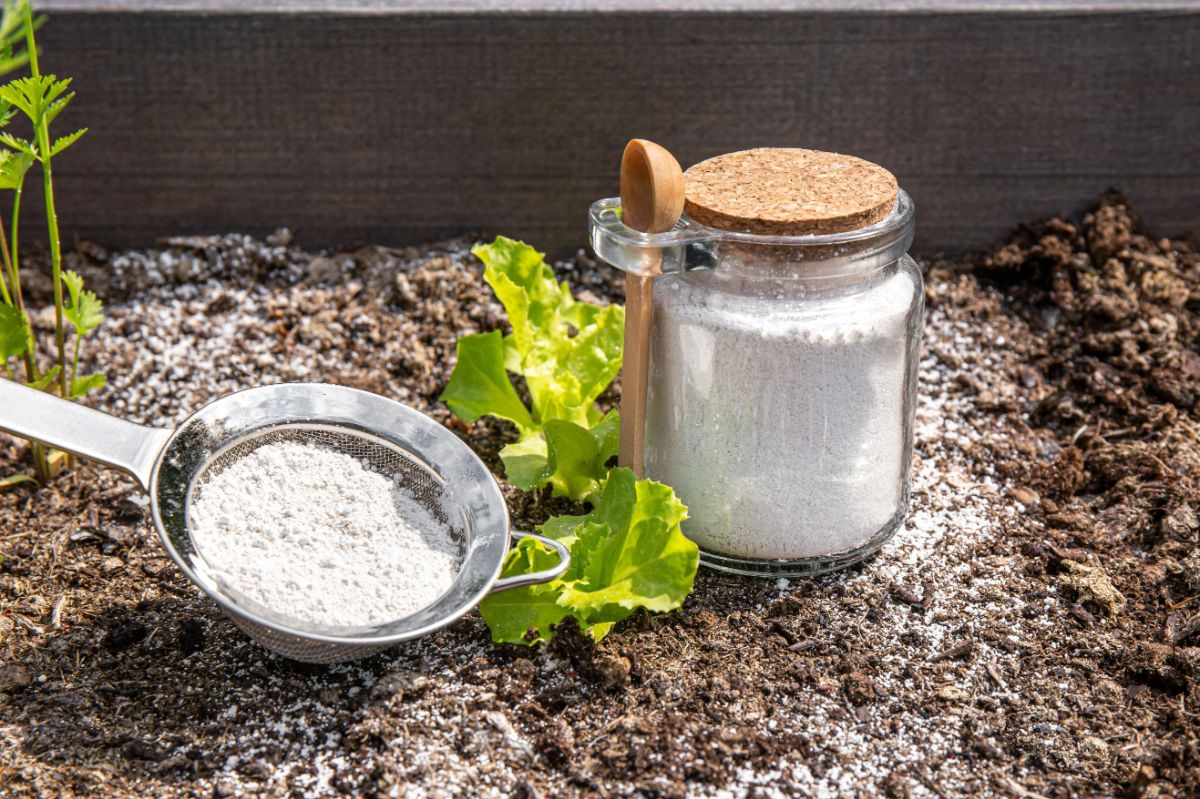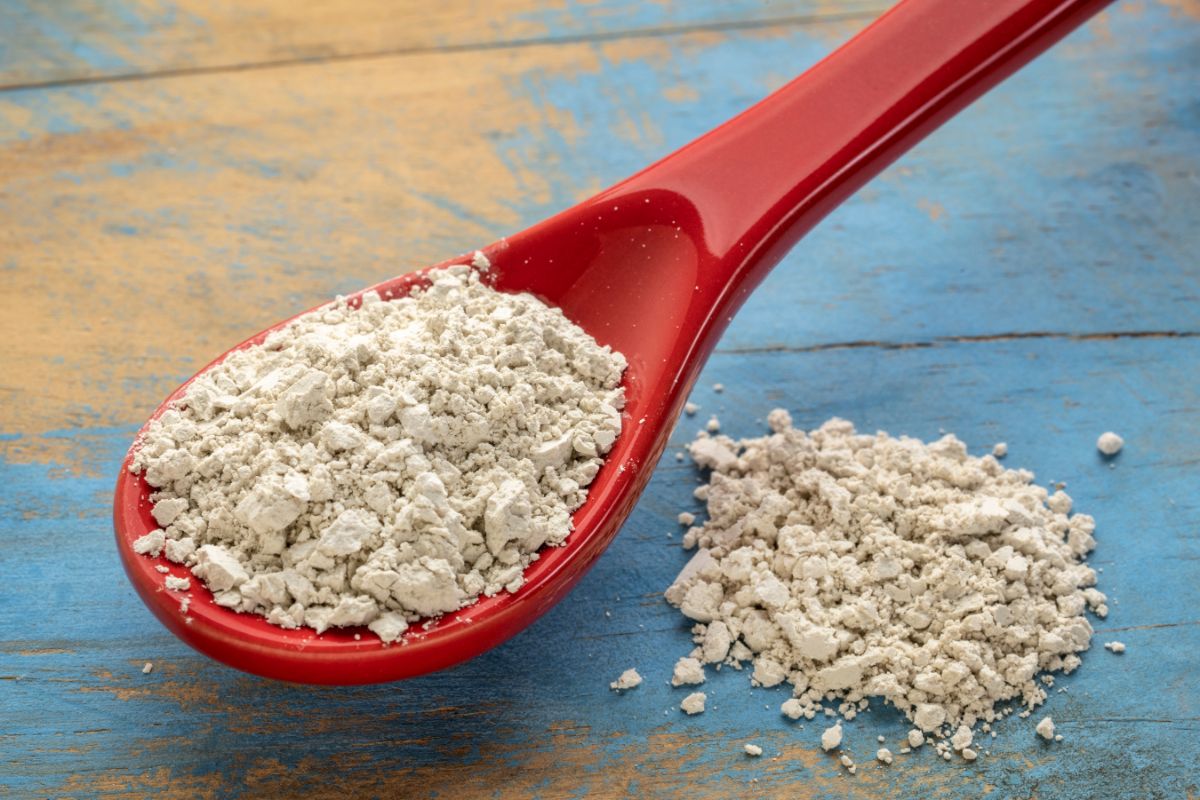
I'm sure you're aware of the amazing applications Diatomaceous Earth has in and around your chicken's coop.
In this article, I'm going to cover some of those uses and answer, 'how often should I sprinkle DE in my chicken coop?'
Jump to:
Benefits of Diatomaceous Earth for Chickens
Diatomaceous Earth (DE) is often heralded as something of a miracle product - and it really is.
There are many benefits to using Diatomaceous Earth in your chicken coop. So many in fact, that if you aren't already using it you're definitely missing out.
Some of those benefits include:
Eliminates Pests Such as Lice, Mites, and Fleas
DE is a powerful insecticide and can kill lice, mites, and fleas on contact - and food-grade DE is perfectly safe to breathe in.
DE is a fine, white powder to us. But the sharp, jagged edges of the diatomaceous earth particles pierce the exoskeleton of the pests, causing them to dehydrate and die.
Prevents Respiratory Problems
DE helps prevent respiratory problems by absorbing and trapping moisture.
It also helps to keep your coop clean and dry - which is important in preventing the spread of respiratory infections.
The ammonia in chicken poop can cause respiratory issues if it becomes too concentrated, DE also works wonders on odors.
Aids In Digestion

Diatomaceous Earth isn't just to be spread around inside the coop or into your chicken's feathers.
Feeding chickens DE helps to improve their digestion and absorption of nutrients from their food.
This is due to the fact that DE contains a high level of silica, which is essential for good gut health.
Strengthens Bones
Silica is also essential for strong bones and healthy joints. Chickens with good bone health are less likely to develop arthritis as they age.
Related - How to tell if your chicken has a broken leg.
Where to Buy Diatomaceous Earth

Click here to see the latest price for food-grade diatomaceous earth on Amazon.com.
How Often Should I Sprinkle DE in My Chicken Coop?
Now that you know all the amazing benefits of Diatomaceous Earth, you're probably wondering how often you should be sprinkling it in your chicken coop.
There is no definitive answer to this question as every coop and situation is different depending on the number of chickens you have, what else you're giving them, etc.
However, a good rule of thumb is to sprinkle DE around the edges of the coop and into the nesting boxes at least twice a year - once in the Spring, and once in the Fall.
If you notice your chickens have parasites, like lice or mites, then you should sprinkle it more often until this is under control.
As for feeding food-grade DE to chickens, I know some owners who mix DE in with their feed so their chickens are always getting some.
I also know some owners who only sprinkle it once a week, or even once a month - there really is no right or wrong answer, it's basically a supplement.
How Do I Know if Diatomaceous Earth Is Food Grade?

The easiest way to know if Diatomaceous Earth is food grade is to check the label.
If it says 'food grade' then it's safe for your chickens to eat.
Buy food-Grade Diatomaceous Earth from Amazon.com by clicking here:

If there is no mention of food-grade on the label, or if it just says 'DE', then you should assume that it is not safe for consumption and should only be used in and around the coop.
The reason why you should always use food-grade DE is that there are other types of Diatomaceous Earth that are not safe for chickens.
These other types may contain harmful chemicals and can actually harm your chickens, as well as you if you're breathing it in.
So, it's always important to make sure that you are buying food-grade DE for your chickens.
What Is the Difference Between White and Brown Diatomaceous Earth?
You may have noticed there is both a brown and a white DE on the market.
The difference between white and brown Diatomaceous Earth is that brown DE has a higher level of silica and gets its darker color from a clay called calcium montmorillonite.
This means that it contains more of the essential mineral that is beneficial for chickens' gut health, bones, and joints.
When it comes to Diatomaceous Earth, you really can't go wrong with either type.
But I prefer the white DE as it's the most commonly used and public opinion is that it's more effective at killing parasites, which is the main use within a coop.
Just make sure that you're buying food-grade DE, and you'll be good to go!
In Summary
Diatomaceous Earth is a miracle product with many benefits for your chickens - from preventing respiratory problems to strengthening their bones.
How often you need to sprinkle it in your chicken coop will depend on your specific situation.
But a good rule of thumb is that unless you're getting carried away or you tip the bag over, it's probably not too much!





